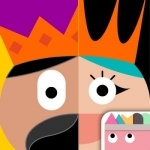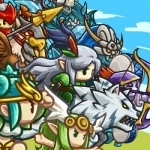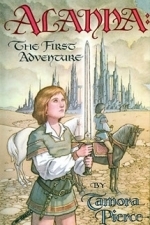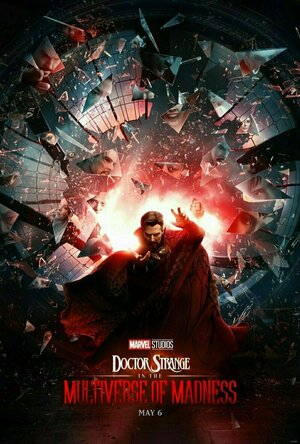Ivana A. | Diary of Difference (1171 KP) rated Stepsister in Books
Feb 3, 2020
<img src="https://i1.wp.com/diaryofdifference.com/wp-content/uploads/2019/05/New-blog-banner-28.png?w=560&ssl=1"/>;
When you are little, you watch a lot of movies. For us girls, life is filled with princesses and happy ever afters. With castles and knights in shining armours. And it’s always that the beautiful girls get their princes. Only beautiful girls get to be happy.
In this book, we get to really see the reality of what I have said above. It is all true. Only beautiful girls get the happy ever after. <b><i>But beauty doesn’t always mean pretty.</b></i>
In a world of prejudice and bullying, Stepsister by Jennifer Donnelly shows people, especially girls, that it is okay to be different. It is okay to be brave and follow your dreams. It is okay to be wild and strong willed. The people that truly love you, will always be by your side.
Meet Isabelle – Cinderella’s ugly stepsister. The girl that cuts her toes to get into the glass slipper. For those who didn’t know, the original Cinderella story by the Grimm brothers indeed has a scene where both ugly stepsisters cut their heel and toes, just to fit in the slipper and marry the prince.
<b><i>‘’The little toe was the hardest. Which didn’t come as a surprise. It’s often the small things that hurt the most – a cold glance, a cutting word, laughter that stops when you enter the room.’’</b></i>
Isabelle has never really wanted to be evil, but jealousy and mum’s pressure have been doing their own thing. When she gets a second chance in life though, she goes for it. She must complete an impossible task to find her happy ever after. And while doing so, she will find her true self.
<b><i>‘’Most people will fight when there is some hope for winning, no matter how slim. They are called brave. Only a few will keep fighting when all hope is gone. They are called warriors. Isabelle was a warrior once, though she has forgotten it.’’</b></i>
Be prepared to feel all emotions, and cheer for Isabelle, when she is fighting against the world. Relive the magic of an amazing retelling and be ready for an unforgettable adventure. What Jennifer has done to bring the Grimm feeling into a powerful story is to be admired. I will admire and cherish this book forever.
I am not a fan of re-reading books, but this will definitely be one book I will always come back to.
<b><i>‘’Algebra comes from Arabic. From al-jabr, which means ‘’the reunion of broken parts’’. Al-Khwarizmi believed that what’s broken can be made whole again if you just apply the right equation.’’
”If only there was an equation that could do the same for people.”</b></i>
Thank you to the team at ReadersFirst, for sending me a paperback copy of this book, in exchange for my honest review.
<a href="https://diaryofdifference.com/">Blog</a>; | <a href="https://www.facebook.com/diaryofdifference/">Facebook</a>; | <a href="https://twitter.com/DiaryDifference">Twitter</a>; | <a href="https://www.instagram.com/diaryofdifference/">Instagram</a>; | <a href="https://www.pinterest.co.uk/diaryofdifference/pins/">Pinterest</a>;

Thinkrolls: Kings & Queens
Education and Games
App
Thinkrolls Kings & Queens is an epic adventure of logic, physics and fun! Practice reasoning, memory...

i-Boating:New Zealand Marine Charts & Fishing Maps
Travel and Navigation
App
GPS Marine Charts App offers access to charts covering New Zealand waters (derived from LINZ(Land...

Endless Frontier Saga - RPG
Games
App
Endless Frontier is the best in idle role playing games for commanding your army of knights in a...

Card Wars - Adventure Time Card Game
Games and Entertainment
App
Floop the Pig! It’s Adventure Time CARD WARS! Play the game inspired by the Adventure Time...
Goddess in the Stacks (553 KP) rated Alanna: The First Adventure in Books
Apr 16, 2018
That complaint aside, the Alanna books are really the foundation that the rest of Tortall was built upon. It's interesting to see how Pierce has fleshed out some of the concepts she touched on in the Alanna saga, and it's fun to see where some of the things from the Beka Cooper trilogy originated. It also pays to keep in mind that though the Alanna books were written first, the Beka Cooper trilogy is based two hundred years earlier. We learn a lot more about the office of The Rogue in the Beka Cooper trilogy, something that isn't explained very well in the Alanna quartet, even though one of Alanna's main romantic interests is George Cooper (yes, a descendant of Beka!), the Rogue. Pierce also never explains the origins of Alanna's cat, Faithful, in the actual Alanna books. That explanation lies in the Beka Cooper books as well.
The Song of the Lioness quartet is the story of a girl who decides to rebel against tradition and follow her heart to become a knight. In her time, ladies simply do NOT become knights. They learn to organize households and marry well. Alanna, however, is lucky enough to have a twin brother who does not want to become a knight; instead Thom wants to be a mage. So when they're sent off to face their futures, they switch places, with Alanna becoming "Alan", the younger twin. (Thom stays Thom; the school that ladies are sent to is the same school mages start at.)
Alan/Alanna begins as a page, then moves to squire, and eventually a knight. Her secret is discovered, but due to her influential friends, most of whom knew she was a girl by then, she is able to keep her status. Her adventures take her from uncovering a plot against the royal family, to being adopted by a desert tribe, to recovering a magic jewel of prosperity, with many small adventures in between.
I love reading Pierce's heroines; both Alanna and Beka have problems reconciling their feminine natures with the work they've chosen. The scenes where Alanna's love interests see her in a dress for the first time, instead of her normal boy-garb and armor, is heart-warming in one case, and sad in another. In both womens' lives it's the man who can accept all of their aspects who ultimately wins their heart, which is a wonderful message.
Ultimately, the technical flaws in the writing of the Alanna saga faded as I became absorbed in the story. I'll be requesting more Tortall books from the library in the near future!
You can find all my reviews at http://goddessinthestacks.wordpress.com

LEGO® Life
Entertainment
App
A safe community built specially for boys and girls, LEGO® Life is 100% free to download and 100%...
BankofMarquis (1832 KP) rated Doctor Strange in the Multiverse of Madness (2022) in Movies
May 9, 2022
And it does not disappoint for while DOCTOR STRANGE IN THE MULTIVERSE OF MADNESS is not quite as “mad” as one would expect by the build up to this film, it delivers solid action by actors playing characters that are easy to root for (or root against) all done with a wink in the eye and a focus on Marvel’s secret weapon…relationships and heart.
You will find no brooding “dark knights” in this one.
Sprightly Directed by Sam Raimi (THE EVIL DEAD), Multiverse (as I will call it from here on out) finds our titular hero (Benedict Cumberbatch) connecting with - and working to save - a multiverse hopping heroine in the form of America Chavez (Xochitl Gomez) from an evil that wishes to drain her of her multiverse hopping powers.
What happens next is a multiverse hopping action/adventure/horror/chase film that really shows off the cinematic sensibilities of Director Raimi who’s mark is all over this film…for the better. Multiverse swerves really close to being a horror film, but, fortunately for it’s box office fortunes, remains firmly in the action/adventure/superhero genre. Only a director like Raimi can ride this fine line as well as he has and it works for this film.
Cumberbatch, of course, is terrific as Doctor Stephen Strange and he slides, comfortably, back into the cloak and sling-ring. Benedict Wong (Wong - The Sorcerer Supreme), Rachel McAdams (Dr. Christine Palmer) and Chiwetel Ejiofor (Baron Mordo) all reprise their characters from the first film and they all seem re-energized in their roles for this one while Xochitl Gomez makes a winning debut as America Chavez.
But, make no mistake, the personae that steals this film is Elizabeth Olson as the grieving Wanda Maximoff/Scarlett Witch who Dr. Strange reaches out to when America Chavez falls into his lap. She is outstanding and is really the driving force here. It would not be a misnomer to say that this film easily could have been titled THE SCARLET WITCH IN THE MULTIVERSE OF MADNESS.
My one quibble with this film is that it doesn’t go to enough Multiverses to suit my tastes and is not quite as “mad” as one would hope - our hero does spend a rather large amount of time in one multiverse - but that is a minor issue and this one multiverse does bring many fun cameos…cameos that will not be spoiled here.
Which brings up one last point. See this film, if you can, in a theater full of the aforementioned fanboys. The full house IMAX theater that I caught this film in went absolutely nuts when one specific person showed his/her face for their extended cameo and that was a very fun time.
As is DOCTOR STRANGE IN THE MULTIVERSE OF MADNESS - it works well as a stand alone film, but if you want to do “some homework”, check out the Disney+ TV Series WANDAVISION (essential), the first DOCTOR STRANGE movie (good background) and the animated Disney+ series MARVEL’S WHAT IF (some nice callbacks).
And, of course, stay for the end credits…it sets up DOCTOR STRANGE 3, a film that can’t get here soon enough.
Letter Grade: A-
8 stars (out of 10) and you can take that to the Bank(ofMarquis)
Daniel Boyd (1066 KP) rated Mass Effect Trilogy in Video Games
Jul 25, 2017
Mass Effect wasn’t the first game to do it, there are plenty of earlier examples of the mechanic being used before in games, such as the Fallout series. Bioware actually included the mechanic themselves in their earlier game in Knights Of The Old Republic, but its inclusion Mass Effect is what brought it to the mainstream and soon every developer was wanting a piece of the dialogue tree pie.
I never owned the original Mass Effect, the most exposure I got of it was through a few mates that owned the game at the time, but eventually the mechanic did end up creeping into games that I did own including; Alpha Protocall, Deus Ex, any Telltale game, The Amazing Spiderman 2, (for some reason,) and even in Uncharted 4.
As much as I enjoy a good ‘choose your own adventure,’ story and as much as I appreciate the trust that developers put in gamers to be able to tell their own story; whether that be through dialogue options, moral choices or customization options, I want you to tell me your story. I didn’t pay 50 quid to get given a setting and a bunch of characters to tell my own story. You guys get paid to craft amazingly immersive works of fiction, so do your job and suck me in. Whenever I’m playing a game with dialogue options and I am starting to get invested in the story and the characters, the inevitable dialogue tree pops up and takes me right out of the experience.
Sure, there are some movies that I watch and wonder why a writer or a director made a certain creative choice, but even if I don’t agree with the decision, it is the creator’s job to make those tough choices and that is what makes great art. One of my favorite movies of the last decade is Nicolas Winding Refn’s ‘Drive’ and that is purely because of the creative choices that the cast and crew made on that movie. I know people that hate Drive and I’m sure if given the option they would change it to be a less daring, more cookie cutter action thriller, but that wouldn’t have earned my respect like it has. Sometimes creators need to stop handholding the audience and make a tough call, even if it could potentially be a polarizing one.
In fact, when I think about it, all of my favorite stories are adored so much because of the definitive, drastic calls that they dare to make. I already spoke about Drive, Fight Club’s twist took some balls to pull off, the ambitious non linear storytelling of Pulp Fiction makes it iconic, Breaking Bad was consistently shocking and yet brilliant, MGS is insanely unconventional and I love it for it and The Last Of Us delivers a divisive finishing blow that we have no choice but to partake in.
That is how you tell a great story and that is how you stand out as a creator, by doing something that no one else could do, especially not your audience. When I come home after a long day at work, I don’t want to do much thinking. I want to relax and be told a story by the folks that are best at doing so. Personally, I think that you should believe in the story you are telling enough to make a definitive decision and if you don’t, is it really a story that’s worth telling?




